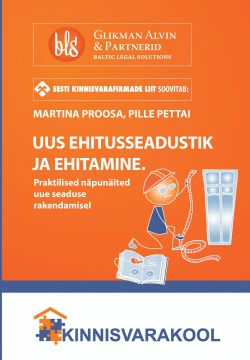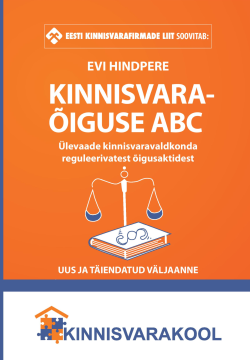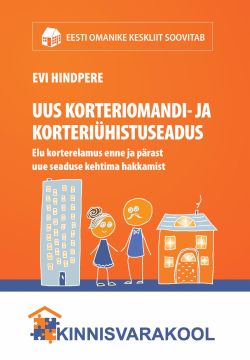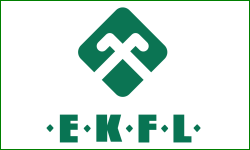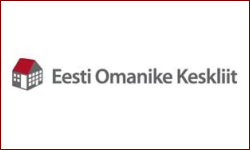 The ending week will be remembered by many for the nervous decline of the stock markets. Despite these uncertain times, the global economy is on track for growth. In Estonia, initial data published for the economic performance of businesses in Q2 confirm a decline in return on sales. However, this has not kept businesses from boosting their employee numbers.
The ending week will be remembered by many for the nervous decline of the stock markets. Despite these uncertain times, the global economy is on track for growth. In Estonia, initial data published for the economic performance of businesses in Q2 confirm a decline in return on sales. However, this has not kept businesses from boosting their employee numbers.
Businesses’ return on sales down in Q2
Year on year, businesses’ return on sales decreased 3% in Q2. To a large extent, the decrease in revenue may be attributed to the impact of a drop in prices: during the same period, the consumer price index has declined by 0.1%, the producer price index by 1.7% and the export price index by 3.3%. Significantly reduced prices for electricity and several commodities reflect a sharp drop in return on sales for energy production and mining, down 19% and 14%, respectively. Sanctions on food products introduced by Russia and decreased prices on agricultural products slashed revenue for the field of activity of livestock and crop-farming by almost 30%.
The field of activity of wholesale and retail business, which contributes 40% of the return on sales in the business sector, was taken into negative territory by 4% in Q2 due to a one-tenth decrease in wholesale trade. The decline in wholesale trade is a long-term trend – return on sales in this field of activity has declined for six consecutive quarters. One reason for this may be identified in a decrease in the client base for distributive trade enterprises, as major retail chains prefer to purchase goods directly from producers. Retail trade and the sale and repair of motor vehicles grew by 3% and 4%, respectively, in Q2. Given that the volume index for retail trade rose more than 7% during the same period, lower growth in return on sales also indicates a drop in prices in the trade sector.
An interesting development worth mentioning is the fact that the return on sales in the accommodation and catering sector has remained at last year’s Q2 levels. Return on sales for accommodation establishments during this period actually grew by 3%. Growth in revenues is remarkable because the number of tourists hosted at Estonian accommodation establishments decreased by 2% in Q2, with the number of international tourists wielding greater purchasing power down by a full 6%. This means that accommodation establishments have had to raise their rates in order to make up for the decreased number of visitors.
The good news for the Estonian economy is the increase in return on sales for its processing industry in Q2. Although return on sales for industrial enterprises increased by just a percentage point, its preservation in the face of weak external demand is most positive. Surprisingly, among the major industries return on sales increased most for textile production (+16%); however, powerful growth was also shown by the sizable timber industry, growing its return on sales by 13%.
The spring quarter was also very successful for furniture manufacturing, closely linked to the timber industry, with the return on sales up 9%. Of the other major sectors, the return on sales also increased significantly for the manufacturing of metal products (+8%) and for the manufacturing of motor vehicles and trailers (+6%). Year on year, return on sales for the large-scale electronics industry is showing zero growth, whereas the food industry, an important employer, has dipped into negative territory by 6%.
Of the other important fields of activity, sales turnover for transportation and storage declined for a second quarter in a row, with a year-on-year decrease of 4% over the spring months. Overall, the return on sales in the sector was taken into negative territory by support activities for transportation and storage, which include, for example, the operation of various freight and shipping terminals. For construction companies, 2015 has been slightly more positive. Whereas the return on sales for the construction sector dropped during the entirety of last year, the sector managed to increase the return on sales by 7% in Q1 and by 6% in Q2 of this year. However, construction volumes decreased in Q2, as a result of which growth in return on sales primarily indicates businesses’ ability to charge more for their work than previously.
Higher employment squeezing business sector budgets
Although businesses’ return on sales decreased in Q2, employment in the business sector has grown 2% during the same period. Hence, book profit generated by an employee for a business has decreased. In Q2 2014, the average return on sales per person employed was EUR 31,000; it is now EUR 29,400. Employment increased 4% in the processing industry, 6% in retail trade, 10% in construction, and 6% in accommodation and catering. In the major fields of activity in the industrial sector, employment grew fastest in the manufacturing of metal products (+19%), the timber industry (+8%), the furniture industry (+5%) and, surprisingly, also food production (+5%). Of all the above fields of activity, only the timber and furniture industries managed to grow their return on sales per person employed – both by 4%.
Table 1. Return on sales and employment in the business sector, 2015. Q2
| Number of people employed | Employment growth | Growth in return on sales per person employed | |
|---|---|---|---|
| Processing industry | 105 000 | 4% | -3% |
| Wholesale and retail business | 86 500 | 2% | -7% |
| Construction | 41 000 | 10% | -3% |
| Transportation and storage | 36 700 | 1% | -5% |
| Administrative and support service activities | 32 700 | 0% | 7% |
| Occupational, science, and technology related activities | 22 000 | -8% | 12% |
| Accommodation and catering | 21 300 | 6% | -5% |
| Information and communications | 19 300 | -1% | -5% |
| Agriculture, forestry and fishing | 14 700 | -2% | -12% |
| Total business sector | 424 200 | 2% | -5% |
Source: Statistics Estonia
Consumer confidence improves
According to the market barometer published during the ending week, consumer confidence in August rose above the long-term average. Yet, the assessment of prospects on the labour market has deteriorated among the population, meaning that the fear of losing one’s job is growing. Given that the first steps toward the improvement of productivity are noticeable at labour-intensive companies, such concerns may be warranted.
This is supported by the deterioration in confidence among industrial enterprises compared to August of last year, and to the long-term sectoral average. Weak external markets do not permit industrial enterprises to utilise their production capacities efficiently, and several enterprises are planning to reduce their employee numbers over the next few months.
In spite of a rise in return on sales, confidence among construction companies remains at levels much poorer than the long-term average. Several construction companies have admitted that the improved demand in the private sector cannot make up for public-sector infrastructure investments funded through structural instruments. Due to rapid growth in sales volumes, confidence among trading companies remains at levels above the long-term average. Confidence among service companies is lower than during the same period last year; however, this is primarily due to the transport and logistics sector.
Restless stock markets
During the ending week, world economic news was dominated by major corrections on nervous stock markets. Over a period of two weeks, important stock markets in the US, Germany and Japan have declined by 10% to 15%. Previous rapid growth of Chinese stocks and economic performance below expectations first aroused fear in local stock exchanges and then also in other major financial markets. As pointed out in SEB’s most recent economic forecast in Nordic Outlook, the situation is nevertheless uncertain on developing markets, and moderate growth is predicted for both the US and European economies.
In reality, slower growth in China means that the economy of this world power will be growing at rates above 6% per annum over the next few years according to SEB’s estimates. In light of the above, an investor taking a long-term view is best advised to keep calm – every downturn is followed by an upswing, and, unless one believes the world is coming to an end, it is not a good idea to sell sound investments without a compelling reason. For investors with disposable funds, plummeting markets provide attractive opportunities to buy stocks of successful companies whose prices seemed too high before.



